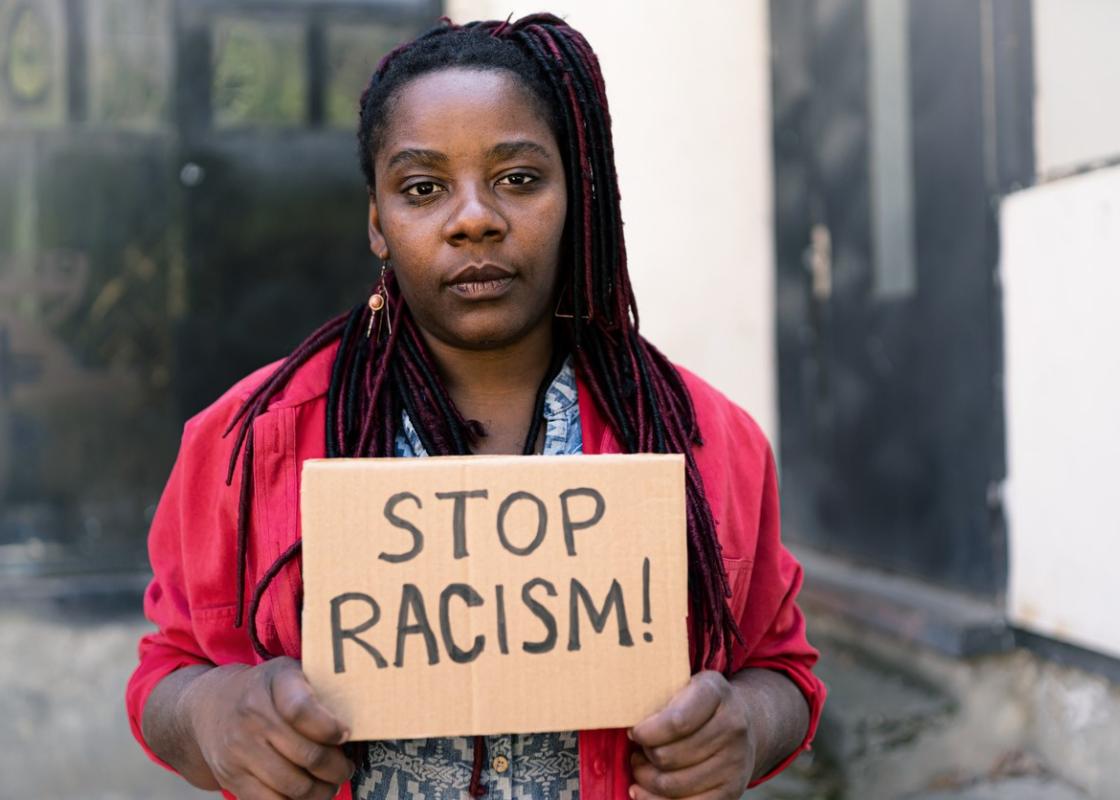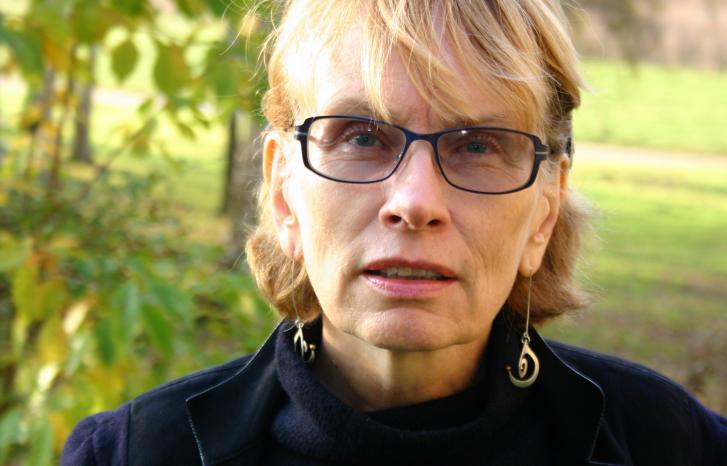In his recent doctoral dissertation, philosopher and gender researcher Amund Rake Hoffart delves into the debate around the term ‘intersectionality’. He has examined how the literature referring to intersectionality is setting out clear guidelines for using the term, and points out the paradoxes this can entail.
“If my dissertation is a criticism, then it is also levied against myself,” he says.
Discrimination against African-American women
The term ‘intersectionality’ was coined by legal scholar Kimberlé Williams Crenshaw in a 1989 article to help explain how the discrimination that African-American women experienced was not encompassed under US antidiscrimination legislation (see fact box).

To win a lawsuit within this system, women would have to demonstrate that they had been discriminated against on the basis of gender or race, which prevented expressing the complex type of discrimination they experienced as both women and African-Americans.
In this way, Crenshaw pointed out the problematic blind spots in US antidiscrimination legislation that were failing African-American women in a system intended to prevent exactly such discrimination.
Her aim was not only to criticize the legislation but also to point out how Western feminism was often rooted in the experiences of white, heterosexual, middle-class women. The legislation was built on discrimination – as based on factors such as ethnicity, class or sexual orientation – as being separate from discrimination based on gender.
Crenshaw argued that multiple forms of discrimination are necessarily interrelated, and the idea of one universal role of women was impeding the work of addressing the wide variety of women’s experiences.
Lost sight of the problem
Intersectionality has become a major theoretical framework in the decades since Crenshaw first put words to the idea. Meanwhile, there has been much debate about what intersectionality actually is or should be, and about how best to work with these concepts in practice.
“When I finished my master’s in philosophy, I began to design a research project to examine the extent to which heteronormative assumptions were underlying the understanding and use of the concept of equality,” says Hoffart.
I saw that as an incorrect use of intersectionality, and I felt the intersectional perspective was being used superficially.
“I wanted to take a closer look at how the Norwegian discourse on equality often centres on the heterosexual nuclear family. And to study how this results in a form of marginalization of those who do not belong to this group, a marginalization that could be called ‘intersectional’.”
In 2012, the report Policy for Equality came out, intended to examine Norwegian equality policy from the starting point of intersectionality, or from a “gender+ perspective”.
“As I read deeper into that report, I became interested in how the intersectional perspective faded, and how the concept of intersectionality became limited to a small number of categories that did not include sexual orientation,” he explains.
“I saw that as an incorrect use of intersectionality, and I felt the intersectional perspective was being used superficially, as a façade of inclusion and diversity – that the report’s use of intersectionality was not genuine but hollow. I investigated that questionable line of thinking that I analyze critically in my dissertation.”
A search for misunderstandings
Hoffart recounts that as he began to seek out incorrect usage and misunderstandings of intersectionality, he lost sight of the intersectional question he actually wanted to study. He had strayed from specifically wanting to study heteronormative marginalization in equality policy to searching for misunderstandings of a theoretical term.
“So this led me away from what could have been a specific intersectional analysis, towards a more theoretical evaluation of correct and incorrect use of intersectionality,” as he explains it.
“It piqued my curiosity about a question that later became a central theme in my doctoral project: What does it actually mean to misuse a theoretical term?”
The act of searching for misuses and misunderstandings presumes that there is a clear answer as to what intersectionality is, Hoffart points out.
“Things can only be clearly wrong in relation to something that is clearly right. Implicitly, this creates the notion of a genuine or true or essential form of intersectionality. It was exactly these notions of the ‘truly intersectional’ that I wanted to examine more closely.”
Hoffart stresses that intersectionality is precisely about loosening up such essentialist understandings of oppression, what a woman is, and so on.
“That is where some of the big paradoxes occur and that I write about. What happens when a project with an anti-essentialist intent begins to essentialize itself in order to keep assumed misunderstandings at arm’s length?”
An all-encompassing model?
Although there appears to be broad academic consensus on the value and relevance of intersectionality, the field is often seen as a battleground of opinions and definitions. Hoffart believes that part of the reason for such heated and polarized discussions is that intersectionality is about taking a stand against exclusion.
“The intersectional perspective entails a criticism of feminist thought for having perpetuated an exclusion of voices, experiences and the like,” he says.
I did not consciously seek out American texts, but the US academic arena completely dominates this field.
“The pain from such exclusion and marginalization inflicted on groups of people has probably reinforced the tendency we see for discussions of theory to become questions of ownership. Against this backdrop, demanding ownership of theoretical terms and attempting to save them from being misunderstood and used incorrectly is a very understandable impulse.”
At the same time Hoffart began his work, a wave of articles and books emerged with the intent to frame intersectionality as a project. A recurring theme was a focus on precisely how the term was being misunderstood and misused, and an attempt to clearly delineate what intersectionality should mean.
Migrating into new fields
“As intersectionality is popularized and spread, it is translated to a number of other fields. And it is during this translation process that the criticism of misuse and misunderstanding arises,” explains Hoffart.
“The reason that a need has arisen to publish commentaries on intersectionality as a project is to influence and correct the direction the field should be heading. It is a critical response to how intersectionality has become mainstream.”
Another characteristic of the texts Hoffart has analyzed is that they are primarily authored by researchers based in the US. To him, this illustrates how US academic circles are still demanding a certain ownership of the term intersectionality.
“I did not consciously seek out American texts, but the US academic arena completely dominates this field,” he says.
“This becomes especially clear when we discuss how the term intersectionality ‘travels’. The wording is always about intersectionality’s journey from North America. Intersectionality is assumed to belong in an American context.”
Cannot accommodate everything
Particularly in the field of gender research, Hoffart believes that intersectionality has become paradigmatized, i.e. the concept has been set forth as a dominant and all-encompassing model applying to both theory and practice.
Hoffart believes that the consequence of such a strong paradigmatization is that there is no way out of it.
“Its status as a kind of imperative can become problematic and paradoxical, especially for a project that defines itself as being opposed to hegemonies. To achieve legitimate status as a complete theory, intersectionality would have to be able to encompass everything and apply to every context,” he cautions.
If you follow the commandments, you can claim to be using intersectionality responsibly.
He sees tension between how the theoreticians define a project and what they actually do when writing about it in the commentary literature. Even though at the core of the intersectionality concept there lies a reticence to delineate clear boundaries, this is precisely what the commentary literature breeds.
“Several studies I have analyzed contain lists of requirements and guidelines, sometimes with long, itemized lists of do’s and don’ts,” he points out.
“If you follow the commandments, you can claim to be using intersectionality responsibly. You are allowed to remain in the fold. Don’t follow them and you risk being banished.”
Although intersectional thinkers often define intersectionality as a project that is sceptical of the major, universal narrative, Hoffart believes the commentary literature serves to promote precisely such a universalization:
“Intersectionality is turned into a general framework, a model that can be summarized in bullet points. Meanwhile, sharp borders are drawn around the paradigm – correct and incorrect, do’s and don’ts, inside or outside – which becomes a form of essentialization.”
Openness to other approaches
"What is actually the problem with having an essentialist and universal understanding of intersectionality? Wouldn’t it be practical to have a clearly defined theory?"
“I am concerned with the inconsistency: saying one is not doing something while actually doing it. I have nothing against a clearly defined theory per se, and I’m completely open to drawing clear borders around a concept in certain contexts.”
According to Hoffart, being open to experience – which is a core concept of intersectionality – requires an openness to ambiguity and different methods and approaches. In his view, a strong paradigm construct does not allow for such openness.
“My point, which is quite intuitive, is that a philosophical perspective cannot contain the solution to everything.”
“If the paradigm construct becomes too strong, we risk remarginalizing certain voices, ideas and experiences. Other ways of understanding the world become overshadowed. Interestingly, the paradigm construct embarks on a collision course with the intersectional goal of creating room for perspectives that otherwise would not be heard. It is this tension that I think should be acknowledged and taken seriously.”
Combatting additivity
A central problem addressed in the commentary literature is “additivity”. An additive understanding, put succinctly, is thinking of identity as a mosaic of separate factors – for example, one’s gender is separate from one’s sexual orientation, which in turn is separate from one’s ethnicity – as opposed to seeing the entirety as one identity. The commentary literature draws clear lines against such additivity as something absolutely crucial to avoid.
“In order to make intersectionality an imperative, meaning a framework that must be adhered to, an ‘other’ is created as a kind of antagonist,” says Hoffart.
Intersectionality is thus understood simultaneously as an imperative and a mystery.
“In the literature, additivity is depicted as a dirty, outdated other. Those who do not achieve intersectional goals can then be exiled as additive others. This may pertain to theoreticians within mainstream sociology or philosophy, but additive approaches are also found within the field. So it’s important that we identify and correct this – that we get our own house in order.”
To Hoffart, this adversarial relationship between intersectionality and additivity is overstated in the discourse. He argues that one can never completely escape additive thinking.
“I believe it is such a fundamental part of our everyday way of thinking.”
“I’m not saying that all thinking is necessarily additive, I’m only saying that it is unrealistic for someone to completely free oneself of and transcend additive ways of thinking. It leads to so many inconsistencies. I have analyzed how the commentary literature on intersectionality is teeming with additivity. This illustrates how it is part of the everyday academic language, even in the realm of intersectionality.”
Unfair burden on those in the field of practice
Hoffart believes that highlighting the conflict between additivity and intersectionality leads to theoreticians forcing an unfairly large burden of responsibility onto those who work with intersectionality in practice, for example in the areas of activism, policymaking, education, human rights work, antidiscrimination legislation or specific research methods. Practitioners often end up making what is perceived as additive errors, and are then criticized by theoreticians.
“As one example, activist groups may sometimes describe the concept of intersectionality in simpler terms that are easier to communicate, such as ‘double’ or ‘triple’ oppression,” he explains.
“Or when I scanned the state report on equality policy with a critical eye and found it to be based on some problematically additive understanding of intersectionality.”
According to Hoffart, an interesting tension exists within the broad academic consensus on the value and relevance of the intersectionality perspective, while at the same time many sense a vagueness as to how one should actually apply it. He points to a recent special issue of the Nordic Journal of Feminist and Gender Research (NORA) entitled “Intersectionality yes, but how?”.
An imperative yet a mystery
“Intersectionality is thus understood simultaneously as an imperative and a mystery,” he emphasizes.
“The fog around it will not be lifted by chasing after misuses and misunderstandings. More helpful would be a softening of this absolute distinction being created between intersectionality and additivity in the theoretical literature.”
I don’t find it especially useful to conduct a kind of theoretical campaign to teach others how to think.
In Hoffart’s view, it is not very productive or fair to push the responsibility onto the practitioners.
“I believe we should instead take a more relaxed attitude to additive approaches. If at the theoretical level we introduce a ban against additivity, which would repeatedly land the practitioners in trouble, it would only serve to prop up a not-so-constructive dynamic between intersectional theory and its application.”
Hope for the future
Hoffart now hopes that more people will take this tension between intersectionality theory and practice seriously. If more people are willing to more openly explore how to apply the theory in empirical research practice, rather than being confined to discussions about proper use of the term, he feels the field will proceed more constructively.
“I don’t find it especially useful to conduct a kind of theoretical campaign to teach others how to think, and in this case how to cast off the chains of additivity.
“Instead, I believe it is important to free ourselves from this exceptionalist notion of cleansing the additivity from our thinking. Only then can we recognize how we are all guilty of additive thinking.”
Calling for a more accepting view
He hopes this field of research will be able to take a softer and more interested view of additivity.
“Perhaps then we can realize that in certain contexts it can be quite a useful and informative way of thinking?”
Hoffart feels there should be room for approaches that are more additive, even in intersectional research.
“If the goal is to produce high-quality, diverse research, I believe the way to go is to loosen up this adversarial relationship between intersectionality and additivity,” he says.
“And in closing, if I can interject a slightly abstract formulation, one argument in my dissertation is that these two approaches actually have an ‘intersectional’ relationship to each other: that intersectionality and additivity constitute and involve each other.”
Translated by Darren McKellep.
- In the 1989 article “Demarginalizing the Intersection of Race and Sex: A Black Feminist Critique of Antidiscrimination Doctrine, Feminist Theory and Antiracist Politics”, Kimberlé Williams Crenshaw used the metaphor of a traffic intersection to illustrate the discrimination that African-American women experienced. The traffic through the intersection travels in different directions, and if an accident occurs, it could be caused by vehicles coming from completely different directions. And it can be difficult to pinpoint which vehicle caused the accident. In the same way, discrimination is complex: multiple interacting factors affect a person’s life and experiences, and seldom can a single factor be isolated as the sole basis of discrimination.
- Amund Rake Hoffart defended his doctoral dissertation Intersectional intersectionality? Interpretative politics in metacommentaries on intersectionality on 8 October 2021 at Örebro University in Sweden.



